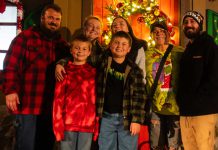SAN JOSE
– Churches, schools and other groups that require large meeting
spaces won a partial victory this week in their search for more
easily-found places to relocate and grow.
SAN JOSE – Churches, schools and other groups that require large meeting spaces won a partial victory this week in their search for more easily-found places to relocate and grow.
County supervisors agreed Tuesday to work with cites – including San Jose and Morgan Hill – to discuss how churches, schools and other so-called “large group assembly facilities” can be included in their future planning efforts in South County.
But supervisors stopped short of actually changing or relaxing the county’s own rules for the facilities – for the time being, at least – after some board members cited concerns about the potential to create urban sprawl.
The board voted 4-1, with Supervisor Liz Kniss dissenting, to authorize county Planning Department staff to work with San Jose and Morgan Hill on incorporating potential sites for the facilities, called “LGAFs” in planning lingo, within the scope of three current or scheduled planning efforts for unincorporated land near their borders.
For San Jose, those studies include a specific plan for the massive Coyote Valley and the Almaden Valley. For Morgan Hill, the discussions would come through a study of future urban planning boundaries.
“Part of this is a regional leadership issue,” said Supervisor Jim Beall, who said churches and other nonprofit facilities seem to lose out to tax-generating commercial development. “We have to change the mindset on these things.”
But supervisors did not vote on another potential motion to have planning staff investigate potential changes in the county’s own zoning laws, seeming to agree that the discussions with the cities should come first.
“We shouldn’t jump into the county’s regulations – that’s wrong,” Beall said. “We need to take some leadership and work with the cities …”
At the request of District 1 County Supervisor Don Gage, the county’s Planning Department has spent months studying whether it should ease land-use rules that limit the size of churches, schools, conference centers and other urban-scale, semi-public facilities in rural and unincorporated areas.
Gage said the study was prompted by over a dozen requests he received in recent years from church and school groups that want to develop or expand their facilities on county land.
Although the county’s policies tries to urge such facilities be built within cities or urban areas, church officials have complained of a lack of suitable sites within cities and a prohibitive expense to site them there.
Meanwhile, county planning policies also set up roadblocks. Technically, current county zoning laws do allow the so-called “large group assembly facilities” on county land with any zoning designation, except for large-scale agricultural uses over 40 acres in size. On medium-scale agricultural parcels between 20 and 40 acres, the facilities are also limited to 10,000 square feet or less.
However, the general plan insists such buildings serve only immediately local communities and not lead to traffic increases. And environmentalists have warned that changing those rules to accommodate the facilities could lead to urban sprawl.
Kniss expressed uneasiness and “trepidation” over the topic several times during Tuesday’s meeting, warning the county was potentially walking on “thin ice.”
“It certainly sounds to me like this practice leads to sprawl,” she said at the start of the hearing. “Unless you can convince me it doesn’t, I don’t see any point in working on it.”
While she voted to advance the discussion, Supervisor Blanca Alvarado also warned that the county may be raising expectations it won’t be able to meet.
“I don’t know as a county we’ll have the ability to do anything above what we’re doing now,” she warned.














